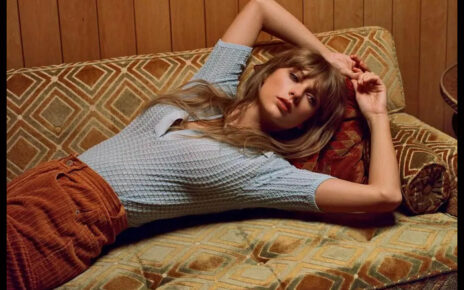If you were a tween in the 1990s, and of a certain disposition — bookish, imaginative, introverted, probably on the Gifted and Talented track, maybe a little on the smug side — you almost certainly read the American Girl doll books. Founded by entrepreneur Pleasant Rowland in 1986, American Girl dolls were a way to teach girls ages 8 to 11 about U.S. history, via a series of dolls with accompanying books and elaborate accessory sets.
Interested in the colonial era? You could buy Felicity, a fiery redhead growing up in Revolutionary War-era Virginia; if your tastes ran more toward the Victorian era, you could buy Samantha, a lush-haired upper-class brunette with a burgeoning interest in the labor rights movement (and who, perhaps more importantly, had a gasp-inducing collection of taffeta dresses).
Related Stories
Emily Ratajkowski's Divorce Is the Super Bowl for Overly Confident Straight Men
Jack Harlow, Kendrick Lamar and Lil Nas X Lead 2022 VMA Nominations
Related Stories

50 Greatest Movie Superheroes
Meet the Beatle: A Guide to Ringo Starr's Solo Career in 20 Songs
The American Girl dolls had their issues. For starters, they were exorbitantly priced (buying just one doll with the accompanying accessories, books, and wardrobes could cost hundreds of dollars). They also represented an oversimplified, whitewashed view of history; for a long time, the only doll of color was Addy, a former slave who was subject to a series of deeply traumatic events, in a way that many of the other white characters in the franchise simply were not. Yet the books were deeply researched and evocatively written, introducing many preteens to historical events they would never have known otherwise, and the dolls became a cherished part of many millennial women’s childhoods.
Recently, however, as co-hosts Brittany Spanos and Ej Dickson discuss on the latest episode of Rolling Stone‘s internet culture podcast Don’t Let This Flop, the American Girl dolls have made a splashy comeback. It arguably started with an Instagram trend in which influencers visited the American Girl Doll cafe for boozy brunch, culminating in a New York Times trend piece and none other than Olivia Rodrigo being snapped by paps visiting the NYC location (though as Spanos points out, she herself invented American Girl doll influencing in 2015, when she visited the cafe as an adult and posted Valencia-filtered pics on Instagram).
There’s also a growing community of American Girl Doll microinfluencers, such as @klit.klitteridge and @hellicity.merriman on Instagram, who make American Girl doll-focused content (the community recently became the center of some controversy when a few creators spoke out against LGBTQ Pride Month, causing massive backlash within the community). One TikTok creator, @arenclelle, has even built a brand recreating the various dishes in the American Girl doll cookbooks. Do they look appetizing? No, not necessarily, but the effort and the intention is clearly present.
Part 2 of cooking my way through the AGD cookbooks 😯 #agd #americangirldoll #agig #cooking #nostalgia #history #americangirl #EasyWithAdobeExpress #felicity
♬ original sound – Seth
Perhaps the most prominent indication that the American Girl dolls are making a comeback is the fact that they have become a meme, with people posting photos with captions such as “We need an American Girl Doll who tried the original FourLoko at a party in 2011” or “We need an American Girl Doll who is an insider and has the tea on what’s happening with Funny Girl on Broadway” (do we ever). The memes provide a hearty dose of nostalgia alongside a helping of cultural critique — kind of like the original American Girl dolls did when they launched. And while some of the historical depictions in the books may not have aged well for the Gen Z set, the memes are clearly setting the stage for an American Girl doll renaissance for a whole new generation. And during a time of unprecedented political and cultural instability, what better way to usher in 2023 than with the bad bitches who weathered the Civil War, World War II, and the Great Depression?
This week on Don’t Let This Flop, Spanos and Dickson also discuss the TikTok Pink Sauce saga, the overly confident straight men who think they’re competing for the heart of Emily Ratajkowski, and why birds are scary.
Don’t Let This Flop is released Wednesdays on all audio streaming platforms, including Apple Podcasts, Spotify, Amazon Music, Stitcher and more.
Source: Read Full Article

